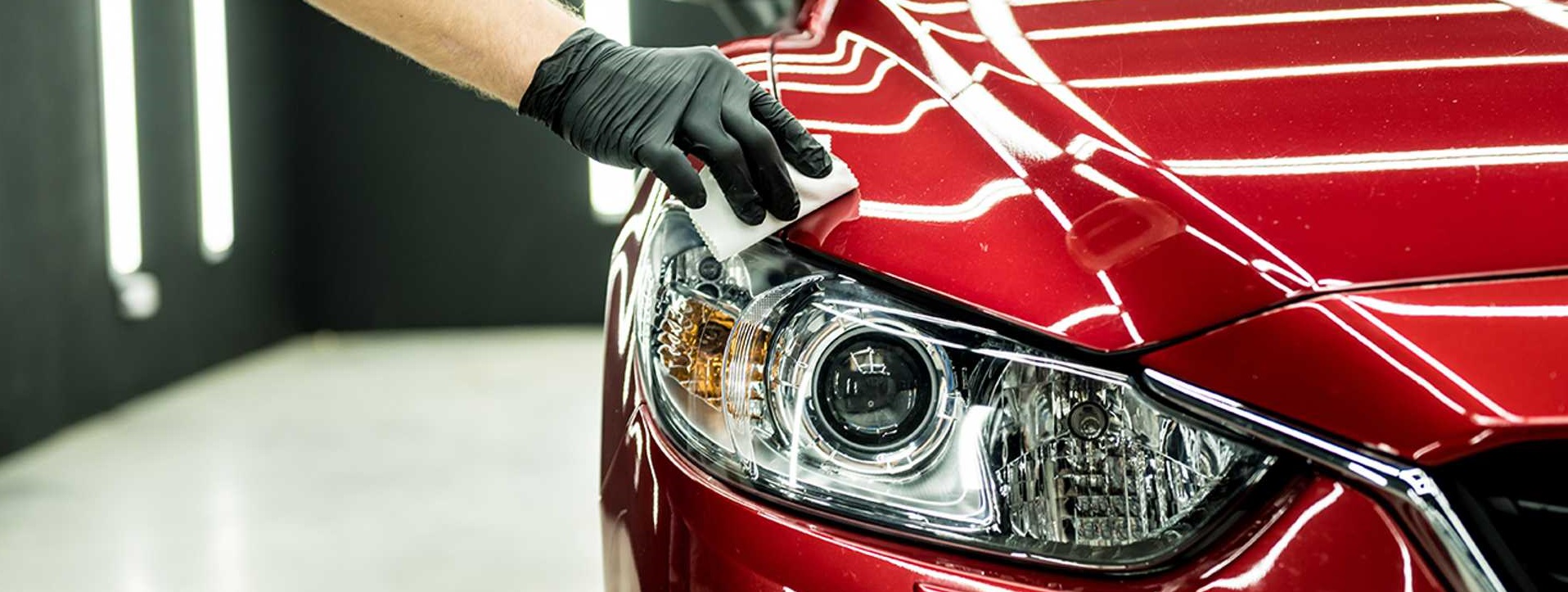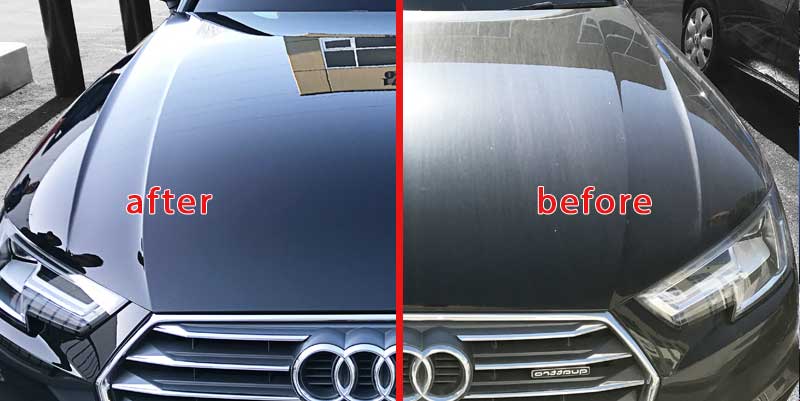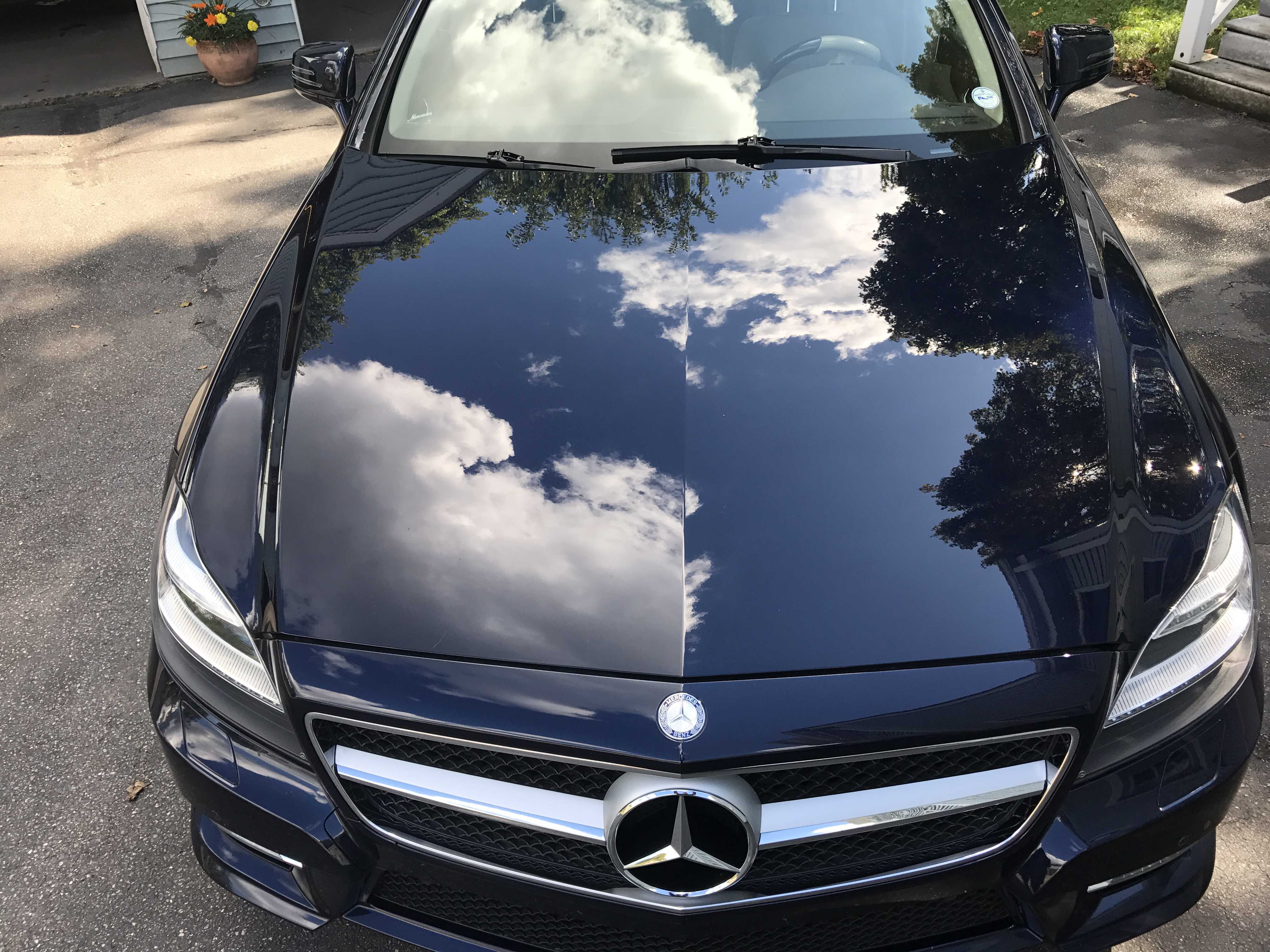Ceramic Coating: The Future of Automotive Surface Protection
Ceramic Coating: The Future of Automotive Surface Protection
Blog Article
Ceramic Finish vs. Standard Wax: Which Gives Much Better Long-Term Security?
The argument in between ceramic finishings and standard wax for lorry security has actually amassed significant attention amongst automotive lovers and professionals alike. While both serve the purpose of securing paint, their differences in toughness, application, and lasting maintenance prices may influence a customer's option. Ceramic coverings flaunt remarkable long life and resistance to environmental variables, yet the complexity of their application raises concerns concerning ease of access and usefulness. As we explore these contrasting alternatives, it comes to be important to think about not just the prompt benefits but likewise the effects for lorry treatment gradually.
Summary of Ceramic Finishing
Ceramic finish has actually gotten significant popularity amongst vehicle enthusiasts and detailers alike due to its innovative protective top qualities. This ingenious modern technology is developed to develop a long lasting, hydrophobic guard over a vehicle's paint surface area, considerably boosting its resistance to environmental contaminants such as dust, UV rays, and chemical discolorations. Unlike traditional wax, which provides a momentary layer of protection, ceramic layers bond at a molecular degree with the paint, providing durable sturdiness-- commonly prolonging beyond two years with appropriate maintenance.
The application procedure entails meticulous prep work of the vehicle's surface area, consisting of cleaning and brightening to make certain ideal attachment. Once applied, the covering cures to create a durable layer that not just includes deepness and gloss to the paint yet additionally streamlines maintenance. With its hydrophobic homes, ceramic layer allows water and dirt to glide off even more conveniently, minimizing the frequency of cleans and minimizing the danger of swirl marks.
Furthermore, ceramic layers are readily available in various solutions, allowing customers to select products tailored to their certain needs and choices. Overall, ceramic finishing represents a considerable improvement in paint protection innovation, delivering superior efficiency compared to traditional options.
Review of Traditional Wax
Commonly considered a staple in automotive treatment, wax acts as a preferred choice for those looking for a straightforward method to enhance and secure their automobile's paint - ceramic coating. Automotive wax usually comprises all-natural components, such as carnauba, or artificial substances, designed to create a safety layer externally of the paint. This layer not just boosts the vehicle's gloss and beam but additionally gives a barrier versus environmental pollutants
The application of wax is usually user-friendly, making it easily accessible for both experts and Do it yourself lovers. When used, wax needs a healing duration, after which it solidifies to form a protective covering.
However, while wax works for improving the visual charm of a car, it is very important to note that the security it uses may necessitate extra constant reapplication contrasted to different products, such as ceramic coverings. In general, conventional wax stays a favored choice for those prioritizing ease of usage and immediate aesthetic enhancement.
Longevity and Long Life Comparison
While both ceramic finishes and standard wax deal safety advantages for automotive paint, their longevity and long life vary considerably. Standard wax, generally made from all-natural carnauba or artificial polymers, typically offers a safety layer that lasts roughly 3 to six months. This reasonably short life-span necessitates routine reapplication to keep ideal defense.
On the other hand, ceramic coverings are crafted from advanced nanotechnology, creating a covalent bond with the paint surface area. This causes a durable, hydrophobic layer that can withstand for 2 to 5 years, relying on the product and ecological conditions. The remarkable sturdiness of ceramic finishes is attributed to their chemical framework, which offers enhanced resistance to scrapes, UV Visit Your URL rays, and oxidation.

Defense Against Environmental Factors
Protecting a car's paint from ecological variables is essential for maintaining its look and worth with time. Cars are regularly revealed to a range of components, consisting of UV rays, bird droppings, tree sap, acid rain, and roadway grime, all of which can compromise the honesty of the paintwork.
Ceramic coverings offer a durable defense versus these environmental aggressors. Unlike traditional wax, which can weaken swiftly under UV direct exposure, ceramic coatings form a durable, hydrophobic layer that stands up to the unsafe impacts of sunlight and ecological contaminants. This sophisticated modern technology produces a chemical bond with the vehicle's surface area, using exceptional protection that lasts for many years, even in rough conditions.
Standard wax, while less complicated to use, usually needs frequent reapplication and uses limited resistance to pollutants and UV rays. Gradually, it can damage down, leaving the paint prone to scratches and oxidation. In contrast, ceramic coatings keep their safety top qualities longer, substantially minimizing the danger of paint damage and making certain that the car keeps its aesthetic appeal. As a result, ceramic coatings are increasingly recognized as the superior selection for long-lasting protection against environmental factors.
Application and Upkeep Distinctions
The approaches of application and succeeding maintenance for ceramic finishings and typical wax vary substantially, impacting the overall customer experience and performance of each product. Ceramic finishes call for a more complex application procedure, commonly involving surface area preparation that includes cleaning, sanitizing, and brightening the car. Once the surface area is all set, the ceramic finishing is applied in a controlled setting, often requiring professional knowledge to guarantee proper curing and bonding to the paint.

While both items enhance automobile appearance, the longer-lasting defense offered by ceramic finishes might justify their initial financial investment, despite the even more demanding application procedure. Conversely, typical wax continues to be a prominent selection for those looking for a less complex, albeit temporary, solution.

Verdict
In final thought, ceramic coatings demonstrate substantial benefits over traditional wax in regards to longevity and environmental management. With a life-span prolonging 2 to 5 years and remarkable resistance to UV rays, dirt, and chemical stains, ceramic finishings provide an extra effective solution for lasting car maintenance. The application process might need specialist experience, the resulting price savings and decreased frequency of reapplication emphasize the worth of ceramic coverings for those looking for ideal automobile security.
The argument in between ceramic coverings and standard wax for car protection has gathered substantial interest among auto lovers and experts alike. Unlike typical wax, which offers a momentary layer of protection, ceramic coverings bond at a molecular degree with the paint, offering durable toughness-- commonly expanding beyond two years with correct maintenance.
While both ceramic finishes and typical wax offer protective advantages for vehicle paint, their toughness and durability differ considerably. For auto lovers looking for long-term protection, ceramic finishes provide an engaging advantage over standard wax products.
In verdict, ceramic coatings demonstrate substantial benefits over traditional wax in terms Learn More of longevity and environmental defense.
Report this page